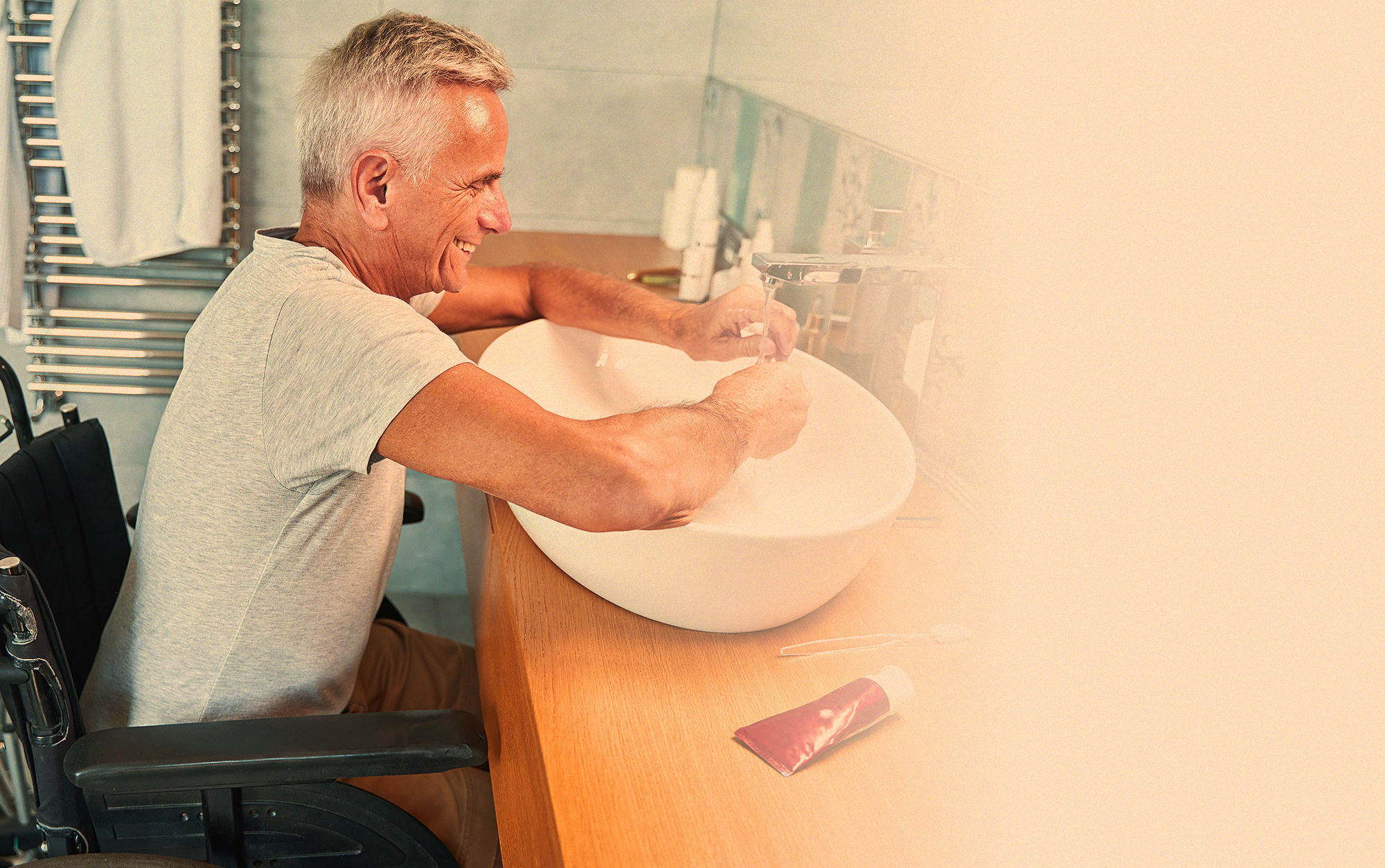
Advice for medical conditions
How to make baths, bathrooms and wet rooms accessible for specific challenges
Helping you with our clinical expertise
Our Assessors and Occupational Therapy partners will guide you to make the right bathroom design choices.
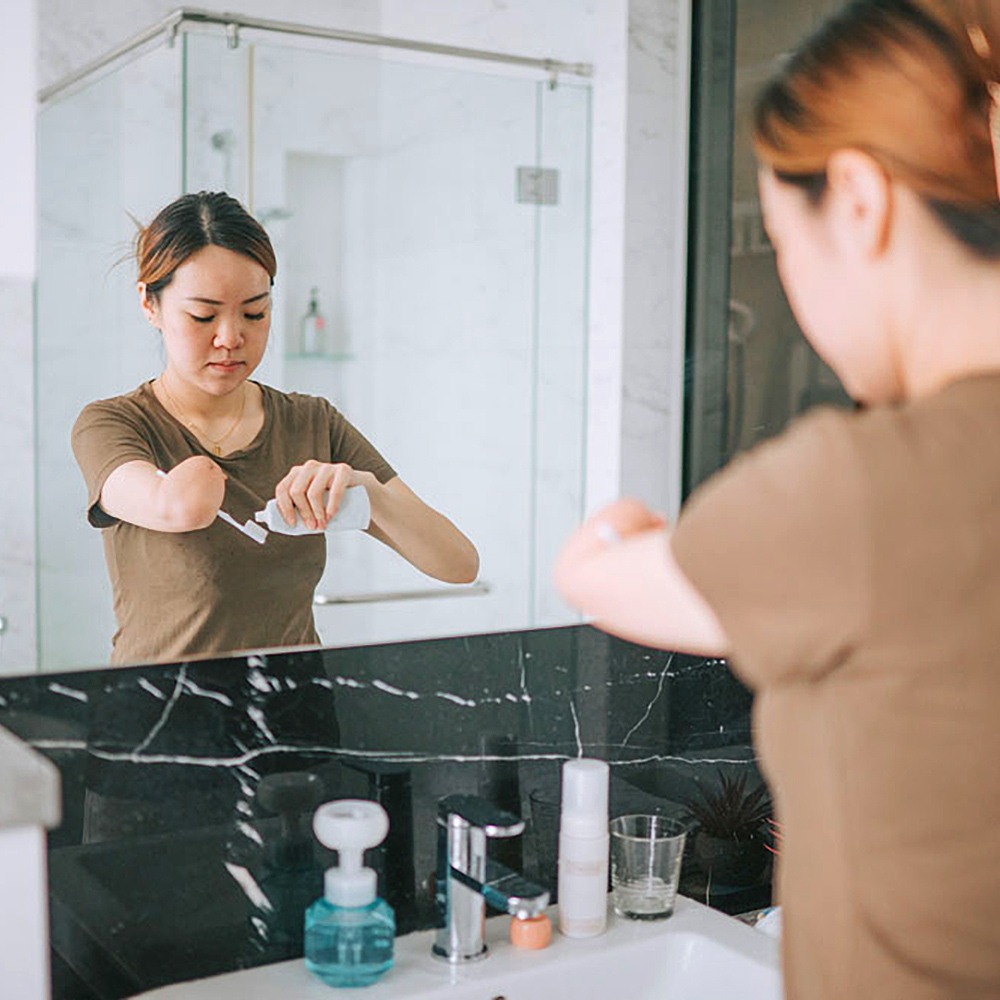
G360 Bathrooms will always provide the most appropriate bathing or bathroom solution for people with a variety of mobility and medical challenges. Our Assessors and designers work with a team of independent occupational therapists so designs from G360 Bathrooms meet all customer needs, both practically and clinically.
If you have a specific medical condition, the following guide offers tips and suggestions for bathroom fixtures and fittings – suggested by our experts and healthcare professional partners. By incorporating these considerations into a bathroom design, daily living can be a little easier and a lot safer.
Accessible bathroom design tips and fixtures for…
Dementia

- Consider fitting taps with levers which are easier to locate and operate, as well as hand and grab rails placed near to the sink, bath or toilet for stability and reassurance.
- G360 baths feature TMV3 temperature-controlled water to make sure the bath is not too hot or cold. Thermostatic taps or blending valves are also options to keep water temperatures safe elsewhere. If deep water makes the bather worried, it’s worth considering a bath with autofill and depth indicators.
- In terms of room temperature, consider low surface temperature (LST) radiators which are not hot when touched. Under floor heating is another option and will distribute heat more evenly. It’s worth keeping a plan of the installation in case future adaptations are needed.
- Anti-slip safety flooring reduces the risk of falls. G360 Bathrooms can advise on the most appropriate options, such as Class C or ideally R10 flooring for exceptional grip.
- Reduce reflection and glare in your new bathroom. G360 Bathrooms can recommend flooring with the correct ‘light reflective value’ – and alternatives to shiny fittings which can improve orientation.
- Consider flooring between living spaces, such as the bathroom, landing and bedroom. Contrasting flooring can be incorrectly interpreted as a step up or down at the threshold, increasing anxiety and risks of falls.
- For enhanced safety, consider fitting a specialist stopcock so that water can be isolated from the room when not in use. You may also wish to remove the internal lock on the bathroom door.
- Visual prompts may be helpful. For instance, toilets can be fitted with a seat lid in a signal colour to help with location and familiarity.
- If you are helping someone to bathe, make sure you don’t strain your back from excessive bending and lifting. G360 specialist baths are available with powered seats which transfer a bather safely in and out of the bath and can assist with drying and changing. Additional adaptations can be recommended following a home consultation.
- An overhead shower may be frightening. Using a hand-held shower attachment may be preferred and will assist with cleaning the bather.
- A range of sensory features can be integrated into some G360 baths which can be beneficial to bathers with Alzheimer’s or other types of dementia, including Hydrotherapy, Chromotherapy lighting and music.
- If showering or a wet room is preferred, consider seamless and step-free level access in your design. A foldaway shower seat with arms can be installed and half height folding shower doors provide easy carer access. An extra-long shower hose is ideal if the bather is seated.
- The spatial planning of a bathroom can help with assisting someone to bathe. For instance, 360-degree access around a bath may be preferred for greater care flexibility. You may also need access for a wheelchair now or in the future. Our designers at G360 Bathrooms can work with you to thoroughly plan your ideal bathroom.
Wheelchair users
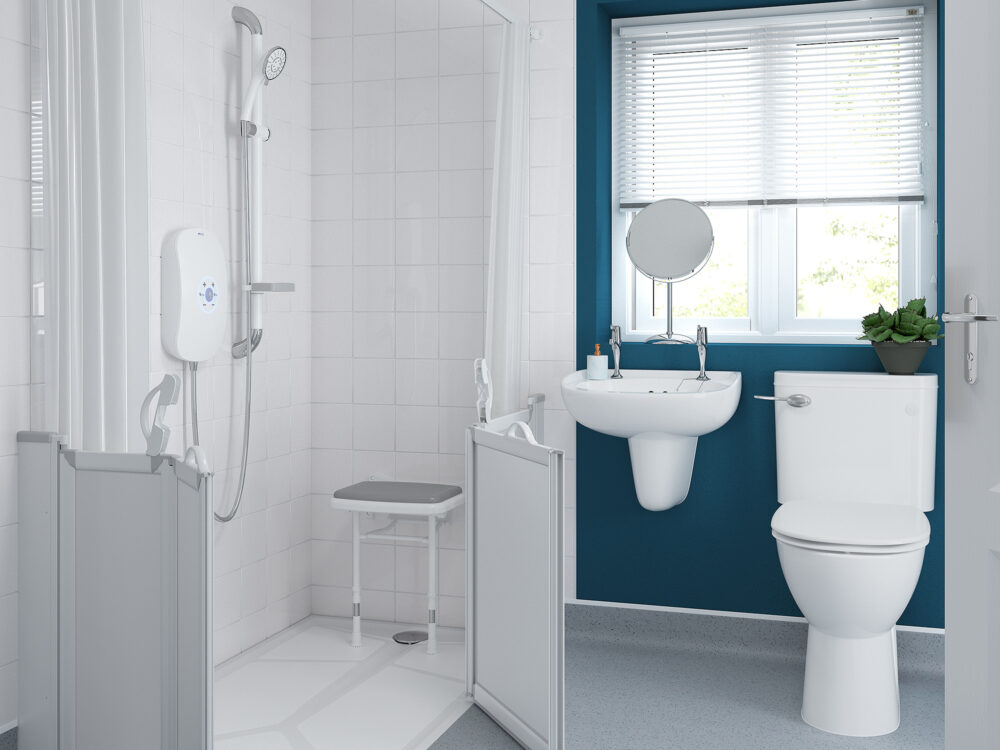
- It is important to understand how a wheelchair user needs and wants to use the bathroom. A G360 Bathrooms home consultation would consider: – how does the person approach the toilet and from what angle? – how does the user transfer into and out of the bath or shower? – is there enough room to manoeuvre a wheelchair? – is access step free?
- Many wheelchair users wish to retain the ability to bathe. G360 specialist baths feature a powered seat with adjustable arms, allowing the bather to easily side transfer from a wheelchair. For extra comfort and reassurance, G360 transfer seats feature seat belts and a pommel, as well as a leg lifter facility which allows independent access to bathing. They are also compatible with an optional detachable transfer chair with wheels to assist carers transferring a bather to another room.
- When choosing a bath, look for a temperature-controlled water feature and easy access plugs.
- If showering is preferred, a G360 accessible shower or wet room provides level access throughout. Wheelchair users can transfer onto a shower seat, with support from grab rails. We offer a range of shower seats, including folding ones which means the showering area is also suitable for ambulant users. Other options to consider include an extra-long shower hose to help with washing and a thermostatically controlled shower mixer to avoid risks of scalding.
- Grab rails or folding supports can be sited in considered places in the bathroom, so users can use them as leverage points for transfers, for instance by the toilet.
- Consider a height-adjustable toilet, wash/dry toilet, smart toilet or electric bidet to maximise long-term independence.
- Consider sinks which are height-adjustable and can provide easy access for both wheelchair users and ambulant users. Additionally, sinks without a pedestal or plumbing underneath ensure wheelchairs can be sited close to the basin. Curved sinks with a concave front also promote easier access.
- Ideally, a wheelchair-accessible bathroom should follow the design of ‘Document M’ which recommends enough space for a 360 degree turn of a wheelchair.
- Consider fitting an outward opening bathroom door which will not hinder the space within the bathroom.
Parkinson’s
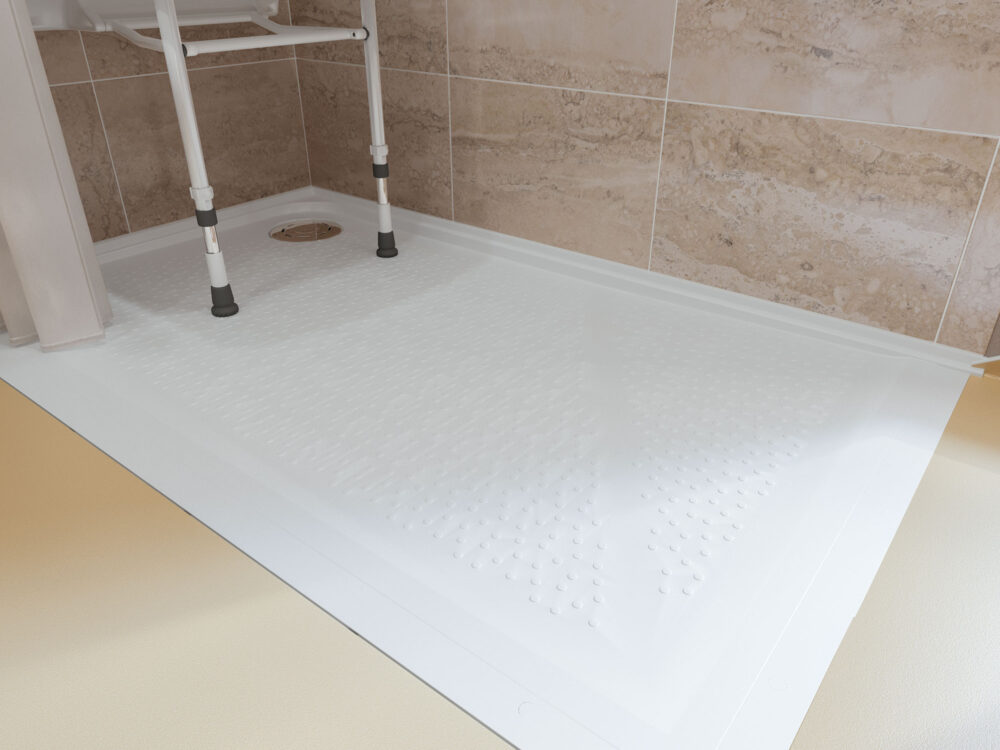
- Parkinson’s is a progressive condition, so users benefit from ‘futureproofed’ bathroom designs. By this, we mean fixtures and fittings which will offer additional support for future needs. Parkinson’s symptoms can be similar to those associated with dementia, so it’s worth referring to our dementia section for guidance.
- To minimise the risk of slips and falls, choosing anti-slip flooring is key. Bathroom flooring should be either Class C or ideally R10 for exceptional slip resistance.
- Consider basins that are height adjustable for easy access whether standing or seated. Or you may wish to select a sink with ergonomic, grip handles for additional support. Sinks without a pedestal and those with a concave front allow closer access for wheelchair users.
- G360 specialist baths are available with powered seats which transfer a bather safely in and out of the bath, and reduce carer handling.
- If showering or a wet room is preferred, consider seamless and step-free level access in your design. A foldaway shower seat with arms can be installed if balance is an issue and half height folding shower doors provide easy carer access. An extra-long shower hose is ideal if the bather is seated.
- Choose a bath or shower which features temperature-control to reduce risks of scalding.
- Consider a height-adjustable or raised toilet, wash/dry toilet, smart toilet or electric bidet to maximise long-term independence.
- Grab rails or folding supports can be sited in considered places in the bathroom. G360 Bathroom experts can provide additional guidance to ensure your bathroom space works well for all the family.
- G360 Bathrooms partner with Parkinson’s UK to provide bathroom solutions which help making life easier when living with tremor, balance or coordination challenges.
- G360 offers the latest innovations in sanitaryware, non-slip floors, voice activated showers and antimicrobial accessible baths.

Arthritis
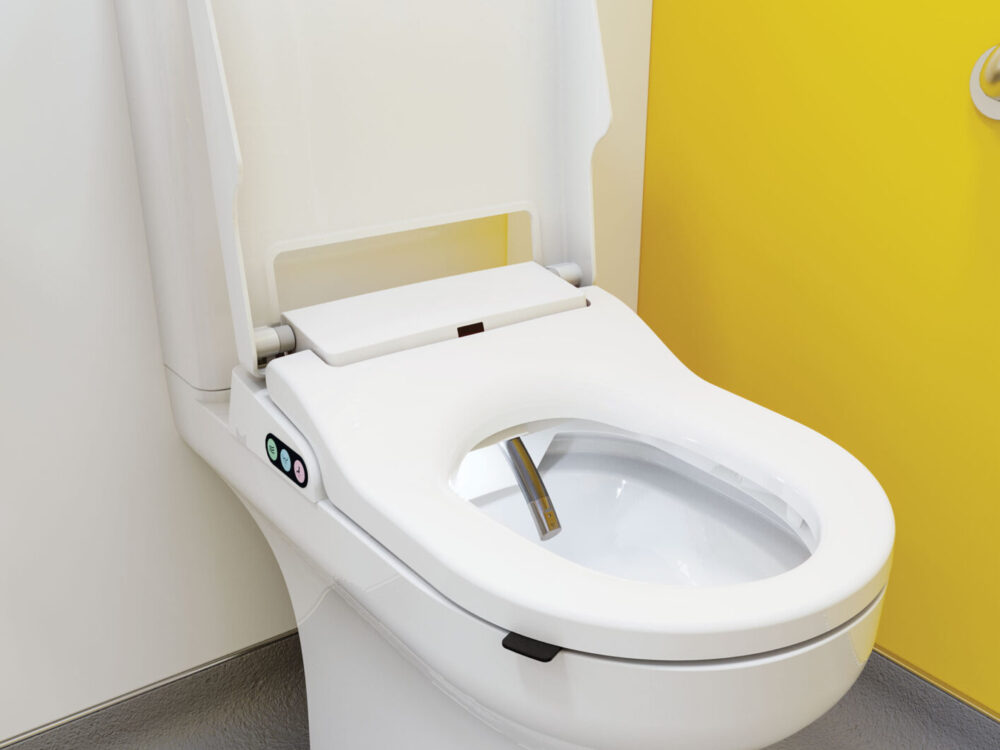
- G360 Bathrooms have a range of baths with powered seats, to allow independent and safe entry and exit to bathing.
- A range of sensory features are available with baths from G360 Bathrooms. Hydrotherapy is ideal to soothe aches and pains, whilst chromotherapy lighting and Bluetooth music can promote relaxation and enhance well-being.
- If showering or a wet room is preferred, consider low-level access and a shower seat to promote stability as you wash. An extra-long shower hose can support someone who is seated.
- Grab rails can be sited close to the shower, bath, toilet and sink. G360 Bathrooms can advise on design and size options to ensure the appropriate grip is provided for someone with reduced dexterity.
- A wash/dry toilet reduces reaching and the need for fine motor skills when cleaning. Other options include a height-adjustable or raised toilet, smart toilet or electric bidet to maximise long-term independence.
- Height adjustable sinks with integrated grab holes can be used to support someone with fluctuating needs. They can be used in a standing or sitting position. Consider lever handles for ease of use or sensor-controlled sinks are available.
- To minimise the risk of slips and falls, choosing anti-slip flooring is key. Bathroom flooring should be either Class C or ideally R10 for exceptional slip resistance.
- Consider incorporating a towel warmer – an ideal option for painful joints.
Stroke

- A well-planned bathroom layout can encourage straight ‘midline’ walking and visual focus. Choose anti-slip safety flooring with the appropriate ‘light reflective values’.
G360 Bathrooms can provide additional recommendations, such as on Class C or R10 flooring for exceptional slip resistance. - Positioning sanitaryware in the most logical position can assist with rehabilitation through ‘learnt behaviour and repetition’.
- Avoid patterned flooring and walls to reduce risks of trips and falls. Choose plain tiles and solid colours. Using contrasting colours to highlight the boundary between floor and walls can be helpful if someone has proprioceptive problems. Additionally, avoid dark flooring if an individual has issues with depth perception.
- Consider fitting taps with levers which are easier to locate and operate, and bath, sink and toilet controls which accommodate users with weakness on one side. Hand and grab rails can be placed near to the sink, bath or toilet for stability and reassurance.
- G360 Bathrooms have a range of baths with powered seats to allow independent and safe entry and exit to bathing. Our range of specialist bather transfer seats and leg lifters will smoothly raise bathers up and over the side of the bath.
- When considering a bath, look for slip resistant flooring and seating, ergonomic handles and easy access plugs. G360 Bathrooms also provide a range of sensory features, such as Chromotherapy and Air Spa to promote relaxation and wellbeing.
- If showering is preferred, an accessible shower or wet room should provide level access throughout. A shower seat and grab rails will provide additional support.
G360 Bathrooms offer a range of shower seats, including folding ones which means the showering area is suitable for all family members. Other options to consider include an extra-long shower hose and a thermostatically controlled shower mixer which can help to avoid scalding. Half height folding shower doors can be installed for easy carer access. - A wash/dry toilet reduces reaching and the need for fine motor skills when cleaning. Other options include a height-adjustable or raised toilet, smart toilet or electric bidet to maximise long-term independence.
Spinal cord injury
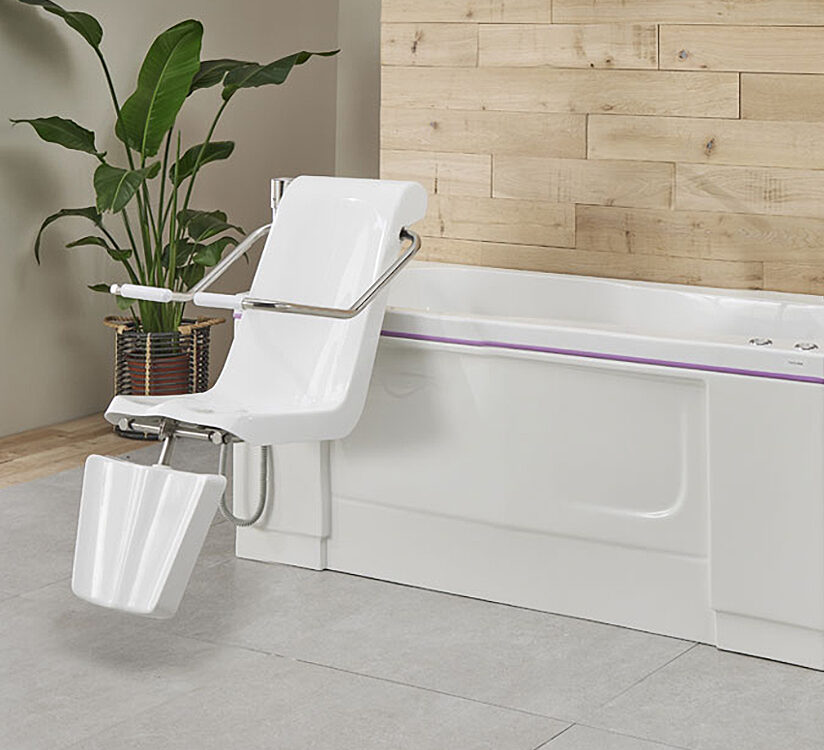
If postural stability is a challenge when bathing then our specialist Alera and Talano care baths are possible solutions. They both have powered transfer seats to lift you in and out of the bath – with safety armrests and a seat belt so you feel reassured. Once lowered into the temperature controlled water, you remain in the seat so trunk control is easier.
Amputation
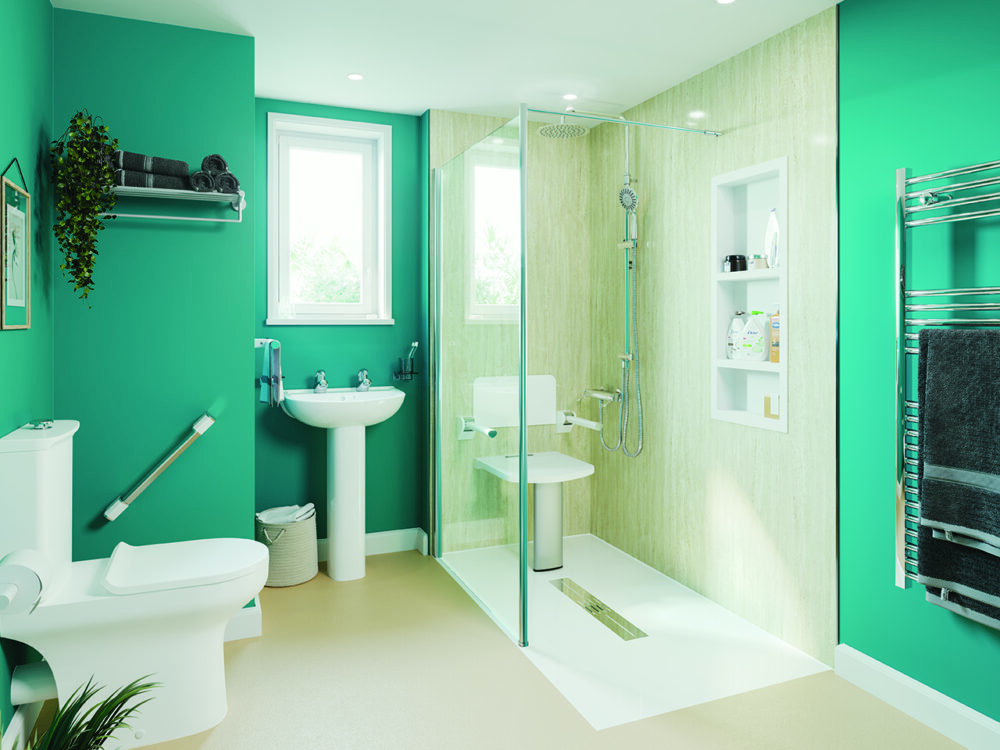
Similar to stroke, our baths and bathrooms greatly assist you if use of one or more limbs is restricted. We can design left and right-handed bathroom accessories to help with balance and all shower controls can be used easily with one hand. Wet rooms with zero thresholds and wide access points build confidence as the risk of slips and trips are minimised.
Multiple Sclerosis
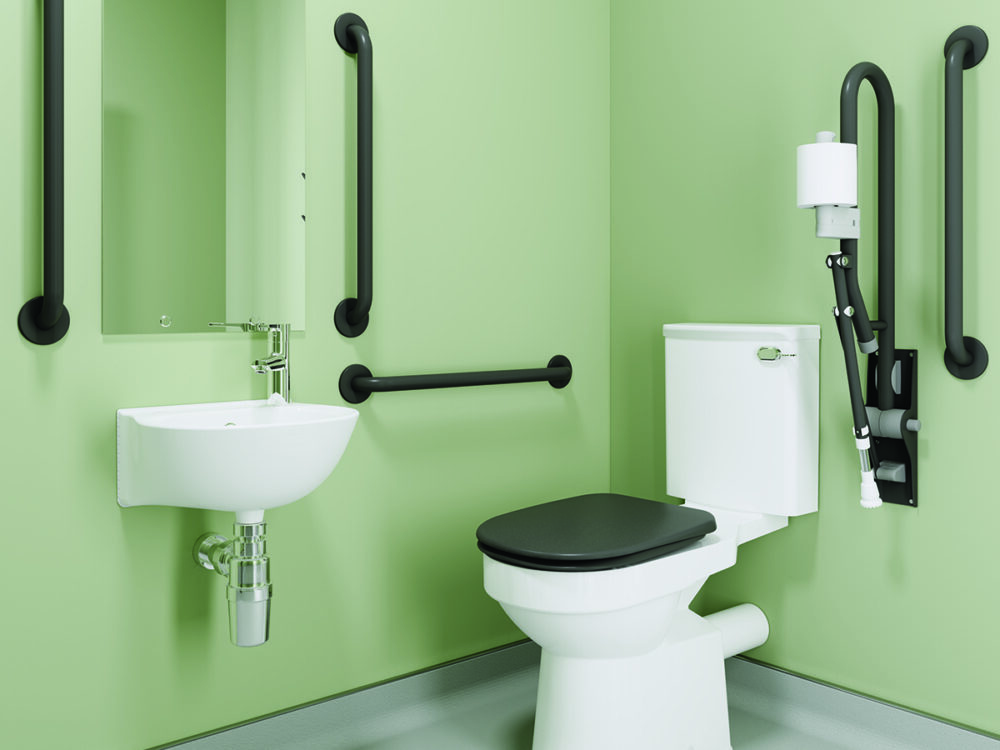
- When planning a bathroom for someone with MS, incorporating additional seating can allow users to take their time with bathroom tasks, whilst considerately positioned grabrails will offer support if balance is an issue.
- A futureproof bathroom design will accommodate any increase in mobility issues in the future. Consider fixtures and fittings which will offer additional support for future needs as well as space for a wheelchair.
- Some people with MS can experience pain from spasticity, therefore installing an accessible bath can be a real benefit. G360 Bathrooms have a range of specialist baths with bather transfer seats and leg lifters which smoothly raise bathers up and over the side of the bath.
- Temperature can have a significant impact on MS symptoms. Ensure the bathroom space is well ventilated and a bath or shower features temperature controls.
- Chose a toilet type that meets individual needs, such as the correct height for wheelchair transfers. Raised and height-adjustable toilets can be supported with grab rails to aid sitting and standing. Wash/dry toilets are available to preserve hygiene and reduce fatigue.
- G360 Bathrooms work with the MS Society to offer you a wide range of easy access baths, bathrooms, adapted showers and wet rooms in the UK. Specifically designed for people with accessibility needs, every G360 bathroom provides safety, style and peace of mind.

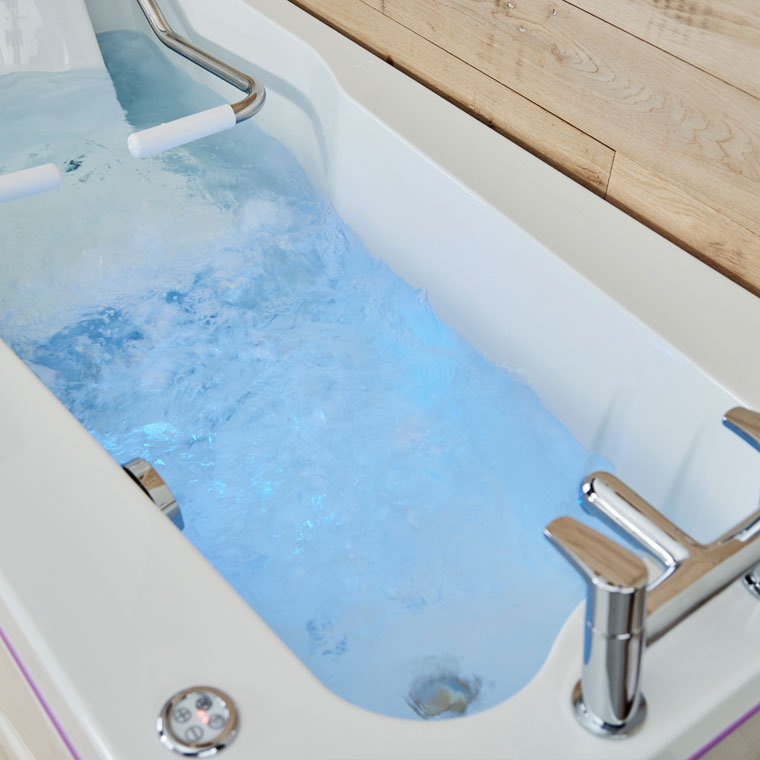
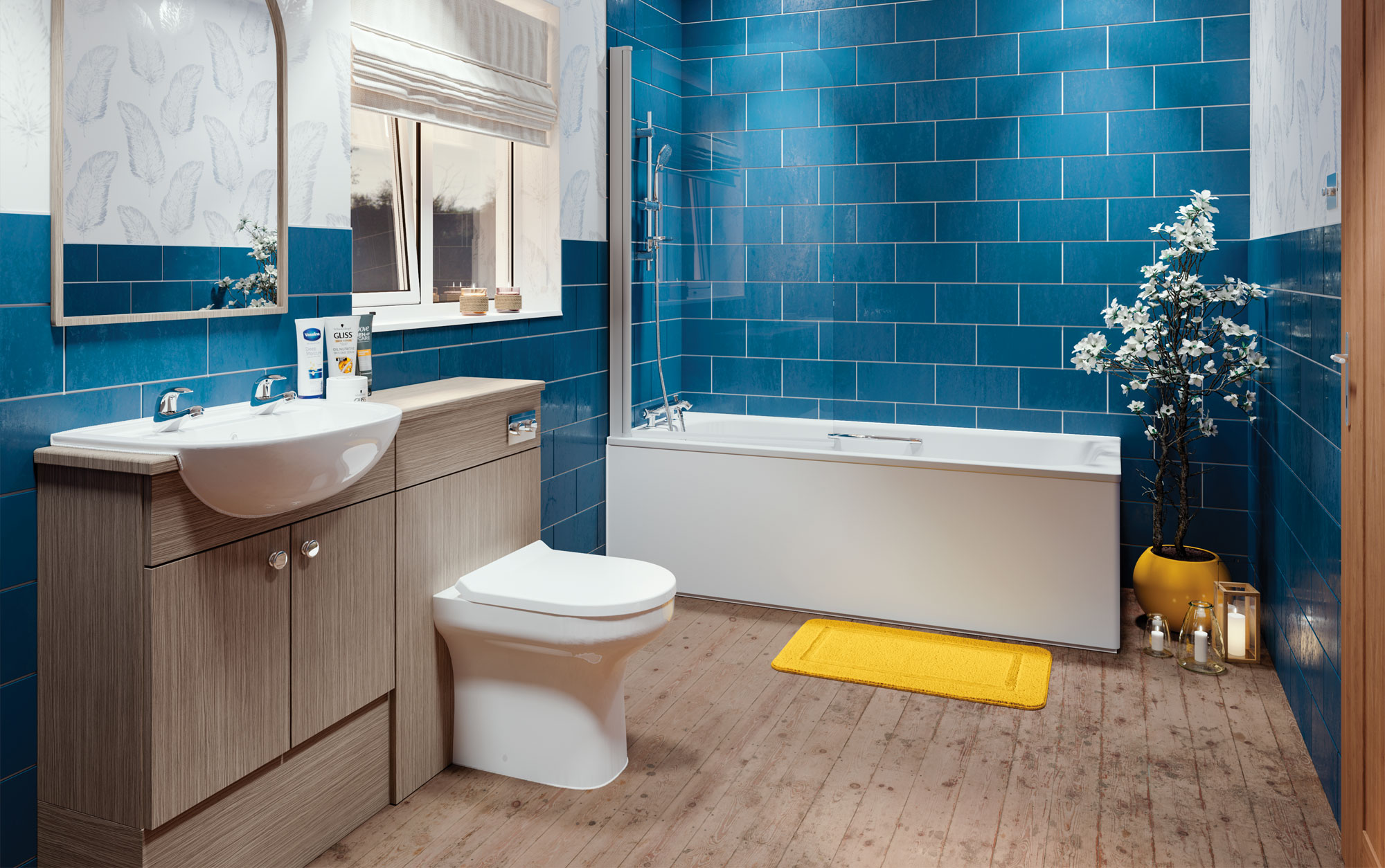
![G360 Bathrooms [logo]](https://g360bathrooms.co.uk/wp-content/themes/g360-theme/assets/img/g360-logo-white.svg)
